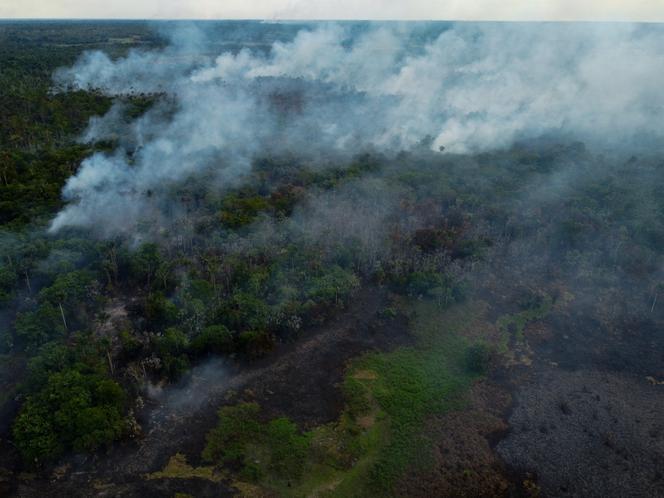


Against all odds, the destruction of the Amazon continues. At least 13,400 fires were recorded in the great rainforest during the first six months of 2024, according to Brazil's National Institute for Space Research (INPE), an increase of 61% compared with the same period in 2023, and 72% compared with the average for Jair Bolsonaro's four years in power (2019-2022), synonymous with environmental rampage.
The main culprits are the current catastrophic drought – declared an emergency since 2023 –, the consequences of the El Niño weather phenomenon, and global warming. "We are witnessing the worst drought in the Amazon in 125 years," said André Guimaraes, executive director of the Amazon Environmental Research Institute (IPAM), according to whom "the water deficit accumulated since 2023 by the ecosystem is making the vegetation highly flammable."
In the Amazonas region, which is three times the size of France, a state of emergency has been declared in 20 municipalities on the banks of the Jurua, Purus, and Solimoes rivers, whose water levels have fallen dangerously low. The use of fire, even for controlled agricultural practices, has been banned for 180 days throughout Amazonas by local authorities.
Despite this, 260 fires were recorded in the region on July 18 alone, 20 times more than on the same day in 2023.
The situation is a major embarrassment for Brazil's Luiz Inacio Lula da Silva, who has made the environment his hobbyhorse and his main argument for international promotion. The left-wing president has appointed the popular Greens activist Marina Silva to the Environment Ministry and restored the main nature protection programs beheaded by Bolsonaro's far-right. The results were not long in coming: Deforestation was halved by 2023 in the Brazilian Amazon. This trend has continued. According to INPE, 1,800 km2 of forest were destroyed in the first six months of 2024, a drop of 34% compared to the same period in 2023.
Paradoxically, fire numbers are exploding while deforestation is falling. "This can be explained by the fact that the areas set on fire today are actually plots of land that were already cleared three or four years ago. There's a time lag between fire and deforestation," said François-Michel Le Tourneau, director of research at the CNRS and a specialist in the Amazonian. "Not to mention the fact that we're in a year of extreme drought, which means that fires spread further."
The multiplication of blazes is no less of a blow for Lula. Aware of the risk of a generalized conflagration in the "lungs of the planet," the left-wing leader sounded the alarm a few months ago. On April 9, from the Planalto presidential palace in Brasilia, he announced a huge 730 million reais (€119 million) aid plan for the 70 Amazonian municipalities where 78% of deforestation is concentrated.
You have 44.54% of this article left to read. The rest is for subscribers only.
